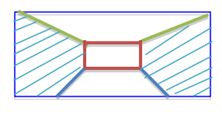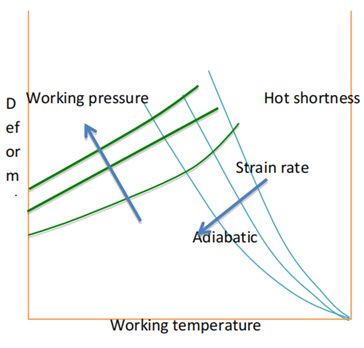 English
English 简体中文
简体中文  Español
Español  Português
Português  русский
русский  Français
Français  日本語
日本語  Deutsch
Deutsch  tiếng Việt
tiếng Việt  Italiano
Italiano  Nederlands
Nederlands  ภาษาไทย
ภาษาไทย  Polski
Polski  한국어
한국어  Svenska
Svenska  magyar
magyar  Malay
Malay  বাংলা ভাষার
বাংলা ভাষার  Dansk
Dansk  Suomi
Suomi  हिन्दी
हिन्दी  Pilipino
Pilipino  Türkçe
Türkçe  Gaeilge
Gaeilge  العربية
العربية  Indonesia
Indonesia  Norsk
Norsk  تمل
تمل  český
český  ελληνικά
ελληνικά  український
український  Javanese
Javanese  فارسی
فارسی  தமிழ்
தமிழ்  తెలుగు
తెలుగు  नेपाली
नेपाली  Burmese
Burmese  български
български  ລາວ
ລາວ  Latine
Latine  Қазақша
Қазақша  Euskal
Euskal  Azərbaycan
Azərbaycan  Slovenský jazyk
Slovenský jazyk  Македонски
Македонски  Lietuvos
Lietuvos  Eesti Keel
Eesti Keel  Română
Română  Slovenski
Slovenski  मराठी
मराठी
Further Analysis of Defects in Extrusion Products
Ningbo Fangli Technology Co., Ltd. is a mechanical equipment manufacturer with nearly 30 years’ experiences of plastic pipe extrusion equipment, new environmental protection and new materials equipment. Since its establishment Fangli has been developed based on user’s demands. Through continuous improvement, independent R&D on the core technology and digestion & absorption of advanced technology and other means, we have developed PVC pipe extrusion line, PP-R pipe extrusion line, PE water supply / gas pipe extrusion line, which was recommended by the Chinese Ministry of Construction to replace imported products. We have gained the title of “First-class Brand in Zhejiang Province”.
Defects in extruded products occur predominantly due to friction and non-homogeneous material flow. Further, temperature variations across the billet during hot extrusion can also lead to inhomogeneous deformation. Three types of defects are prominent in extrusion. They are: extrusion defect, surface cracks and internal cracks.
Extrusion defect is basically due to inhomogeneous deformation. Material at the centre of the billet comes across least resistance compared to the material near the die wall. As a result, rapid flow happens at center. After one third of the billet is extruded, the material from periphery gets entrained towards the center and flows rapidly. Oxides present in peripheral layers are also entrained. Oxides form internal stringers near the center. This defect is known as pipe or tail pipe or extrusion defect. Die wall chilling of the outer layers of material also leads to inhomogeneous deformation. Outer layers of material cools rapidly and hence resistance to flow is higher. By reducing the friction and temperature variation between centre and periphery, this defect can be reduced. Using a dummy block smaller in diameter than the billet may form a thin film of metal and protect the billet against oxidation.
Towards the end of the process, rapid flow of material at the centre will result in pipe formation.
Surface cracks:
Too high extrusion speed, too large a friction too high a temperature may result in formation of surface cracks. Fir-tree cracks are transverse cracks which often occur in aluminium or magnesium due to hot shortness. Longitudinal tensile stresses may be induced on the outer layer, causing the cracks. At lower temperatures, stick-slip phenomenon may cause cracks especially in hydrostatic extrusion where pressures are very high. Sticking may happen due to thick viscous oil film.
Internal cracks:
Secondary tensile stress at the centre can cause centre cracks called chevron crack or centre burst. Such defects are known to occur under low friction conditions and low extrusion ratio.
Additionally, die angle and contact length play major role in centre burst. Larger the die angle, more the inhomogeneous deformation, thereby causes chevron cracks. The ratio of height of deformation zone to length of deformation zone, h/L is very important parameter controlling this defect. Large h/L values cause secondary tensile stress at centre, because the material at centre has not reached plastic stage – due to non-homogeneous deformation. As a result, centre burst occurs. Large die angle causes larger h/L.


Fig.1: Extrusion defects
Temperature of extrusion plays a very vital role on soundness of the extrudes. Multiple factors are involved in selection of working temperature. Strain rate, temperature of working and deformation force are inter-related factors affecting the quality of extruded parts. The following graph illustrates this.

Fig. 2: Temperature and strain rate effects on deformation of material during extrusion
When working temperatures are higher, corresponding working pressures are lower. Limiting temperature is decided by hot shortness. Similarly, strain rates are limited by adiabatic conditions and retention of more heat in the billet. Excess strain rates at a particular temperature restricts the extent of deformation due to the possibility of crack formation. Or if excess strain rates are involved in the process, the working temperature has to be reduced for avoiding hot shortness. Higher deformation temperatures reduce the pressure required for a given deformation or for a given pressure, larger deformations can be achieved.
If you need more information, Ningbo Fangli Technology Co., Ltd. welcomes you to contact for a detailed inquiry, we will provide you with professional technical guidance or equipment procurement suggestions.



